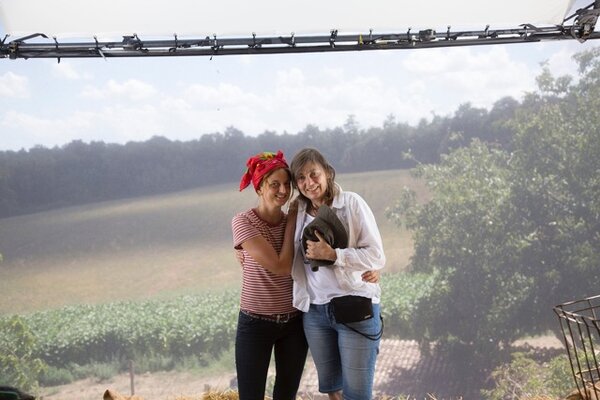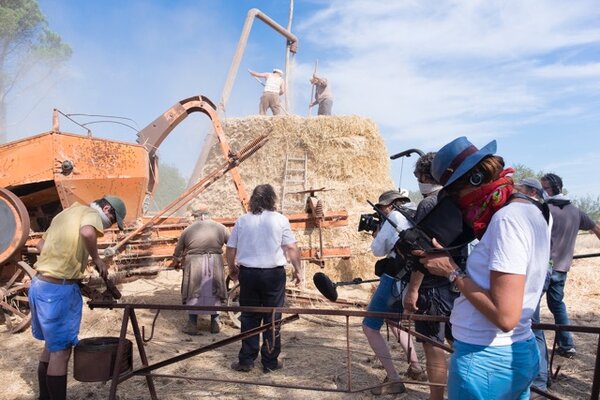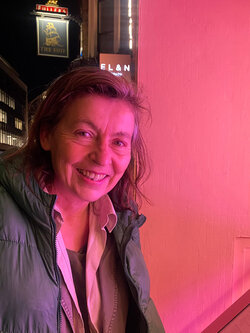Cinematographer Hélène Louvart, AFC, discusses her work on Alice Rohrwacher’s “Lazzaro felice”
Lazzaro, a young, exceptionally generous peasant, lives in Inviolata, a hamlet that has remained cut off from the world and governed by Marquise Alfonsina de Luna. The peasants’ life has remained the same since time immemorial, they are exploited and in turn, they exploit Lazzaro’s generosity. One summer, he makes friends with Tancredi, the son of the marquise. Their friendship is so precious that it travels through time and brings Lazzaro into the modern world.
Starring Nicoletta Braschi, Adriano Tardioli, Alba Rohrwacher, Sergio Lopez.
The film’s context
Lazzaro felice is set during two time periods : the first takes place in the central Italian countryside, and the second, 25 years later, in the northern Italian cities of Turin and Milan. The film was hard to shoot because it was less intimate than Heavenly Body or The Wonders, and there were more characters to film. The concept of the group is important to the story, and I’d say that Lazzaro has a strangeness that had to come across in the image itself.

Always going further
I don’t take anything for granted when I work with Alice, even though I am familiar with her tastes, her world. I didn’t want to do the same thing as on her two prior films. We wanted to evolve the way we filmed. Perhaps we drifted towards slightly less subjectivity, towards a more “objective” storytelling technique at times.
To do that, we set up three different ways of filming, and each scene only had one or two of the three.
The first involved a camera that was practically carried on the shoulder and that followed the action and the characters in a normal way, without any particular point of view : we’re with Lazzaro and the group of characters, and we’re just filming “what’s going on in front of our eyes.”
The second camera is on sticks, shooting panoramic, or travelling shots, in which we get closer to him, with a tighter focal length and that just frame Lazzaro inside the group ; or, even if he is alone, he’s set off against the context surrounding him. Usually at a low angle. He’s sort of “magnified” by the frame, meaning by the way of looking at him.
The third way of filming is a concept of cinematography in which the camera clearly distances itself from the story, with larger frames, and most often high up. A bit like an “entity” that might be observing Lazzaro.
Of course, once the film was edited, those differences aren’t as obvious. And yet, if that approach to filming had become too visible, it would have given the film a theoretical quality that of course, wasn’t originally intended.

Super 16, a non-negotiable choice
Only the Super 16 (for the time being, at least) fits Alice’s form and desire for cinema. We think that it is a medium that contributes something organic and artisanal and that corresponds to a different way of seeing the world. The Super 16’s rendering gives off a form of poetry, of “febrility” in the image, and we like the sensation of always being a bit surprised by the rendering of the images : sometimes too dark, or even much too dark, or too light, or much too light, not in focus, or really not in focus (even though I’m really attentive to the focus in the viewfinder, the result isn’t always what I thought it would be in the dailies), or grainy, or much too grainy... A bit as though we didn’t really know how to use the tool, but the imperfections end up giving the film a visual sense and a will that isn’t constantly seeking to be in control of everything. Because the result of the images always surprises us, it definitely keeps us interested and concentrated on what we’re doing and how we’re doing it, without taking anything for granted between us. Even though, to be completely honest, I can say that as the years go by, I’m starting to know what result I’ll get with Super 16mm... But, I continue to play the surprise game ; it’s a way of keeping myself on my toes.
As for the lenses, we haven’t got much choice if we want to maintain a certain lightness or an acceptable definition (especially in the wide shots) : Zeiss Ultra Prime or the Cooke S4 series.
As for the film itself, only Kodak is still manufacturing it.

Staging, camera angle, and lighting choices
Alice and I choose the camera angles together, in function of her staging choices on set. No shot list, no shooting script beforehand, just a main idea (like our three different ways of shooting). And because we often pre-light, of course we also shoot in function of the predefined lighting angles.
The winter portion is sunny, and we avoided making the summer countryside appear pleasant as much as we could : the sun is a burden, hot and uncomfortable for the characters working in the fields.
For night scenes, we recreated a moon effect (18kW on a cherry-picker) and lightbulbs that look pretty strong for indoor scenes on screen, but whose brightness we slightly corrected to adjust the contrast. We used ARRI L10 and L7 LED spots in reflection (I especially like these spots).
How and why didn’t you succumb to perfection in postproduction ?
In postproduction, during colour grading (digital, because the film images were scanned), we tried to preserve the Super16’s “rendering flaws” intact. Like on The Wonders, her prior film, we didn’t want to smooth the images out. Dirk Meier, our colour grader, and we, engaged in “self-censorship” and didn’t always try to improve the images using colour grading tools that would bring the film towards an overly-standardized level of fabrication quality.
Of course, I did use the advantages provided by digital colour grading to help increase the brightness of shadow, where I’d gone a bit too far at times. But the flaws in focus, grain, framing, and lighting were accepted.
When I’m Alice’s cinematographer, I don’t mind “committing” technical mistakes because I know we’re looking to create a form of writing and all mistakes are part of our quest. Everything “technically perfect” is boring to her, and in Lazzaro felice, we went pretty far into the territory of the technically imperfect.
And I’m delighted with the result.
(Collected by Brigitte Barbier on behalf of the AFC, and translated from French by Alexander Baron-Raiffe)
Photos : Simon Pampallona
Copyright : Tempesta
 En
En Fr
Fr





